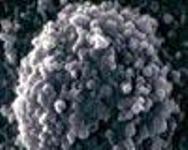Ureaplasmosis refers to sexually transmitted diseases. What are the symptoms of men and women?
Content
What is ureaplasmosis?
Under ureaplasmosis, the inflammatory process in the urinary bodies is currently understood. Ureoplasmosis is caused by ureoplasm - microorganisms, in size from approaching large viruses and having no DNA, no cell shell.
Transmission of infection occurs mainly sexual
by, but possibly intrauterine infection from the patient of the mother, and
In addition, microbes can fall into the sexual path of the child during
childbirth and maintain there all life, until the rest is in inactive
condition.
Ureoplasm can cause inflammation of any
Departments of the urinary tract - urethra, prostate, bladder, testicles
and their appendages, and in women - vagina, uterus and appendages. Besides,
In some studies, it was possible to establish that ureoplasm can
Fixed on spermatozoa and violate their motor activity,
and in some cases just kill sperm. Finally, microbes are capable
cause inflammation of the joints, especially with rheumatoid arthritis.
Ureoplasmosis can occur both in acute and
in chronic form. As with many other infections, the disease is not
It has symptoms specific for this pathogen. Clinical
manifestations of ureoplasmosis depend on the affected organ. In the same time
Modern methods, the pathogen is often detected and
healthy women who do not prevent any complaints and often in combination with
Other infections.
Symptoms of ureoplasmosis occur after 3-5 weeks
The moment of infection. It should be noted, ureoplasmosis manifests itself
insignificant symptoms that are not interested in patients, and often
Do not manifest itself (especially in women).
Symptoms of ureaplasmosis in men
- scant transparent separation from the urethra;
- moderate pain and burning in urination;
- With the defeat of the prostate gland - the symptoms of prostatitis.
Symptoms of ureaplasmosis in women
- scarce transparent discharge from the vagina;
- moderate pain and burning in urination;
- Pain at the bottom of the abdomen (when inflammation of the uterus and appendages).
To identify Ureaplasma Parvum and Ureaplasma Urealyticum uses sowing and PCR.
ELISA and PIF are widely used in our country, but are characterized by low accuracy (about 50-70%).
Detection of antibodies to Ureaplasma Parvum and Ureaplasma Urealyticum has a limited value in the diagnosis of ureoplasmosis.
Without treatment, ureoplasmosis can from time to time
manifest. Re-exacerbations can be associated with
Alcohol in large quantities, cold, emotional overloads.
Chronic
Infection can over time to cause stricture of urethra. In the absence of
treatment in men ureoplasmosis can cause inflammation of the prostate
glands.
In women, untreated ureoplasmosis causes
Inflammation and spikes in the fallopian tubes, leading to infertility and increasing
Risk of ectopic pregnancy. Pregnant women ureoplasmosis can cause
Pathology of pregnancy and fetus.
It is worth noting that the causative agents of the mentioned
Diseases (urethritis, inflammatory diseases of the uterus and appendages,
Urolithiasis) are not only ureoplasm, but many others
Microorganisms. The share of ureoplasm accounts for only part of these
Diseases.
Considering that ureoplasm can cause
spontaneous abortion and premature births before planned
Pregnancy is advisable to get rid of ureoplasm.
It is very important to inform your sexual partners about
disease, even if they are not bothering them, and convince them to pass
Examination and treatment.









